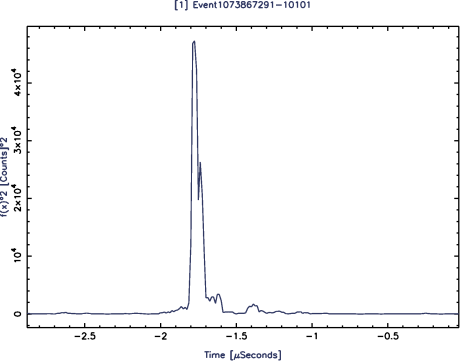Observing Air Showers
There are different ways to observe air showers. Traditionally, one directly measures the shower products that make it all the way to the surface. These may be detected by using for example Particle detectors. In the case of KASCADE, the muons in the shower produce a short flash of light when they hit a slab of scintillator material. These flashes can be registered using photomultipliers.
LOPES uses a different approach. Charged particles in the shower, mostly electrons and positrons, are deflected in the Earth's magnetic field. A simulation of the charged particle trajectories is given in the graph below. The height scale is compressed for clarity.
Because of the relativistic velocities of the particles in the shower, they will emit synchrotron radiation in this process, which is beamed very sharply downwards, at radio frequencies below 100 MHz. The contributions of these many minute sparkles together produce a bright flash which may be detected by the radio antennas of LOPES.
An example of such a radio flash is shown in the viewgraph below. The horizontal axis displays time in μs, the vertical axis represents the total received power in all antennas (although no absolute calibration is available for this yet). In making this plot, the time series was beamed towards the direction of arrival of the air shower.

